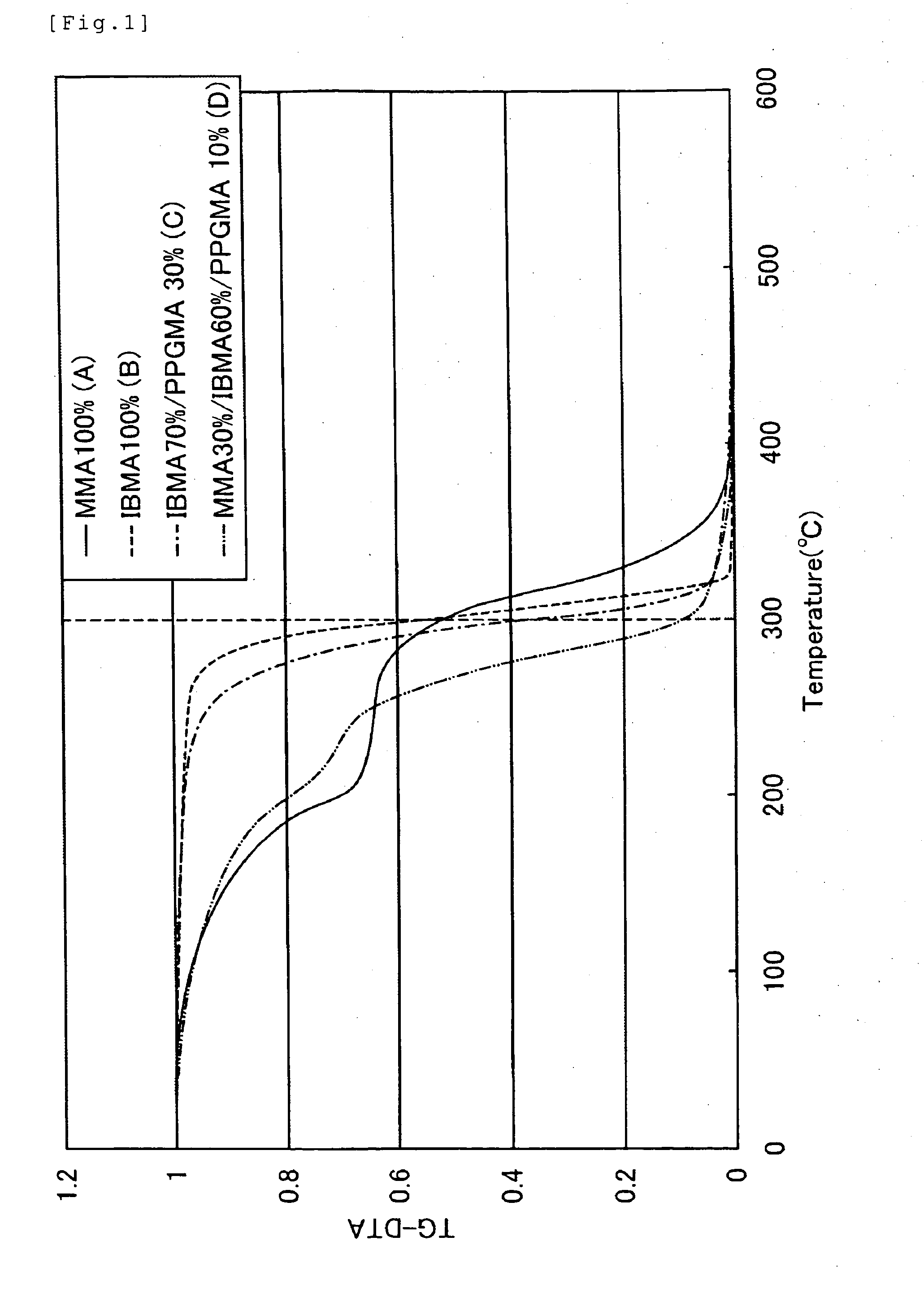Binder resin, vehicle composition, and paste composition having inorganic microparticle dispersed therein
- Summary
- Abstract
- Description
- Claims
- Application Information
AI Technical Summary
Benefits of technology
Problems solved by technology
Method used
Image
Examples
example 1
(Production of Binder Resin)
[0067]A monomer-mixed solution was obtained by mixing: 25 parts by weight of methyl methacrylate (MMA), 70 parts by weight of isobutyl methacrylate (IBMA) and 5 parts by weight of polypropylene glycol monomethacrylate (Blemmer PP1000, manufactured by NOF Corp.) as monomers; 0.3 parts by weight of mercapto propanediol as a chain transfer agent; and 100 parts by weight of ethyl acetate as an organic solvent, in a 2 L-separable flask equipped with a stirrer, a condenser, a thermometer, a hot water bath, and a nitrogen gas introduction inlet.
[0068]After the thus obtained monomer mixed solution was bubbled with nitrogen gas for 20 minutes to remove dissolved oxygen, the system in the separable flask was replaced with nitrogen gas and heated until the hot water bath boiled while stirring. To the resulting solution was added a solution of a polymerization initiator diluted with ethyl acetate to start polymerization. The ethyl acetate solution containing the poly...
example 2
[0072]A binder resin, a vehicle composition and an inorganic fine particle-dispersed paste composition were produced in the same manner as in Example 1, except that, in the process of (Production of Binder Resin), a monomer-mixed solution was produced by mixing: 15 parts by weight of methyl methacrylate (MMA), 80 parts by weight of isobutyl methacrylate (IBMA) and 5 parts by weight of polypropylene glycol monomethacrylate (Blemmer PP1000, manufactured by NOF Corp.) as monomers; 1.0 part by weight of mercaptosuccinic acid as a chain transfer agent; and 100 parts by weight of ethyl acetate as an organic solvent.
example 3
[0073]A binder resin, a vehicle composition and an inorganic fine particle-dispersed paste composition were produced in the same manner as in Example 1, except that, in the process of (Production of Binder Resin), a monomer-mixed solution was produced by mixing: 40 parts by weight of methyl methacrylate (MMA), 50 parts by weight of isobutyl methacrylate (IBMA) and 10 parts by weight of polypropylene glycol monomethacrylate (Blemmer PP1000, manufactured by NOF Corp.) as monomers; 0.3 parts by weight of mercapto propanediol as a chain transfer agent; and 100 parts by weight of ethyl acetate as an organic solvent.
PUM
| Property | Measurement | Unit |
|---|---|---|
| Percent by mass | aaaaa | aaaaa |
| Percent by mass | aaaaa | aaaaa |
| Percent by mass | aaaaa | aaaaa |
Abstract
Description
Claims
Application Information
 Login to View More
Login to View More - R&D Engineer
- R&D Manager
- IP Professional
- Industry Leading Data Capabilities
- Powerful AI technology
- Patent DNA Extraction
Browse by: Latest US Patents, China's latest patents, Technical Efficacy Thesaurus, Application Domain, Technology Topic, Popular Technical Reports.
© 2024 PatSnap. All rights reserved.Legal|Privacy policy|Modern Slavery Act Transparency Statement|Sitemap|About US| Contact US: help@patsnap.com








